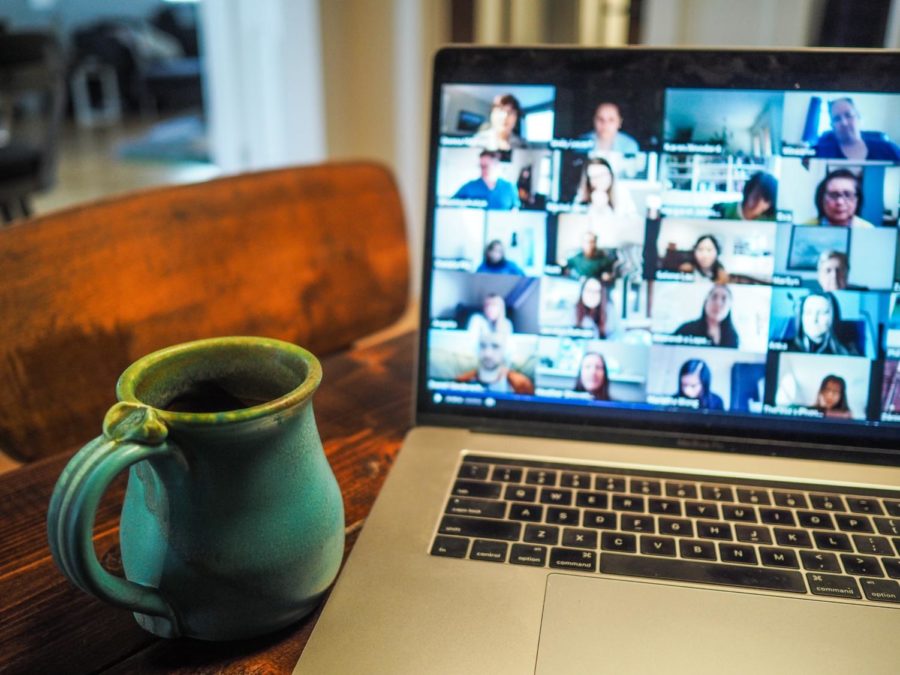Ziemann: The new ‘Black Mirror’
August 26, 2020
“Turn your videos on and introduce yourselves to the class!”
During week one of the fall 2020 semester, a cheery professor chirped that phrase at the beginning of every one of my Webex class sessions.
It’s a statement that’s becoming pretty common nowadays.
Due to the coronavirus pandemic, Iowa State University has had to make some pretty severe changes to the way it conducts class. This semester, most courses are online or in a hybrid format — meaning the amount of students in the classroom and subsequently on campus has been reduced significantly.
To accomplish the feat that is hosting more than 30,000 online students, Iowa State is partnering with Cisco Webex to deliver online course material via live video. The university uses two of Webex’s meeting modes: Webex Meeting and Webex Training, both of which give students the option to broadcast their face and surroundings to the entire class.
I am a senior in the Ivy College of Business, and this semester, all of my classes have some sort of online component. Two are completely online, and the others are hybrid with some form of synchronous lecture over Webex.
My experience is pretty similar to most people affiliated with Iowa State this semester. We as undergraduates may be at home and on our computers most of the day, but so are staff and faculty.
I have to give them props — professors are making the best of what they were given while still attempting to satisfy socially starved students.
And trust me, I’m just as socially starved as the next person. I am part of Gen Z, an age notorious for despising phone calls, and I find actual happiness in talking on the phone now because I get to hear another person’s voice.
I would love to see every classmate’s face.
But sometimes it’s fine to just see a name on Webex.
Keeping your webcam on for every second of an online class can reveal more than you bargained for, as I talked about in a column toward the beginning of quarantine.
The space around you when your webcam is on says a lot about your situation. It shows whether you’re home or on campus, with roommates or without, in your parents’ unfinished basement or your nice apartment they help you afford.
You don’t have to say anything to tell the entire class about your finances.
And that’s something we shouldn’t expect everyone to do.
The past few months have been tough for our mental health without having to worry about other people seeing your private space. In the United States, anxiety and depression are surging to new heights with a third of Americans reporting symptoms. The Centers for Disease Control and Prevention (CDC) says 10.7 percent of Americans have expressed suicidal ideation in the past month, more than double the 2018 numbers.
I know this firsthand. Stressors about COVID-19 and my future as a young professional in a pandemic-stricken world caused me to see a therapist again after five years.
We’re dealing with enough. There is no need to exacerbate that by forcing students to show their faces during every online course.
Mental health isn’t the only reason we should be limiting our faces over Webex. Some students may not have a choice.
Some may not have a webcam so they must access the lecture from their phone.
Some may have loud, disorganized home environments due to external factors like home-schooled children, stir-crazy pets and parents working from home.
Some may be attending class from campus, sitting outside with a mask on.
Some may just be in a residence hall room not wanting to broadcast their roommate to the class.
Before this semester, we had the opportunity to leave home at home. Let’s retain that small bit of normalcy and not mandate webcams.
In the meantime, there’s one thing students and professors alike can do to level the playing field. Let’s normalize using virtual backgrounds. Webex has a feature where users can blur their backgrounds or add virtual effects, kind of like if you were in front of a green screen. Not only are these virtual effects fun to see (since we can’t go to beaches right now, why not put one behind you?) but they hide the parts of our lives we may not want to show.
No one should have to have their webcam on for the entirety of an online class, but until that’s the case, let’s do what our professors are doing. Let’s make the best of what we were given.
Because whether we’re on campus or online, we still have a semester to finish.

















